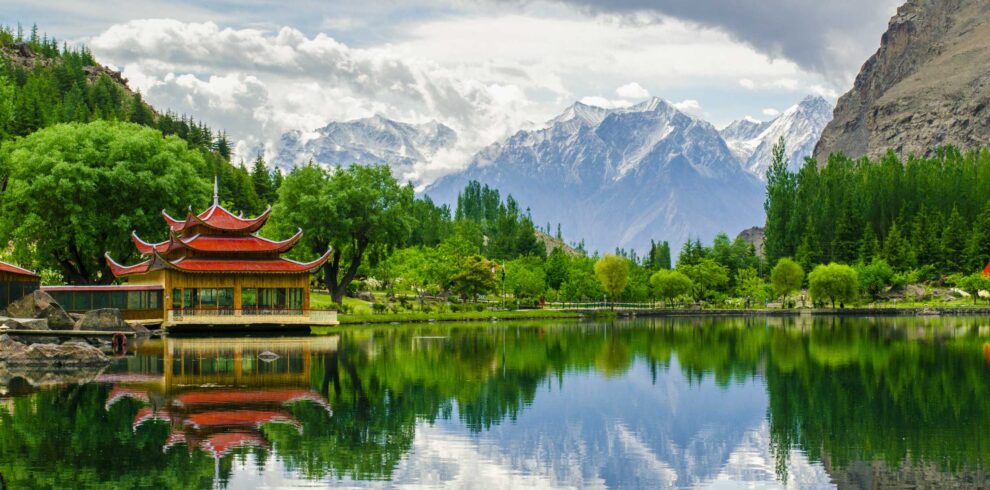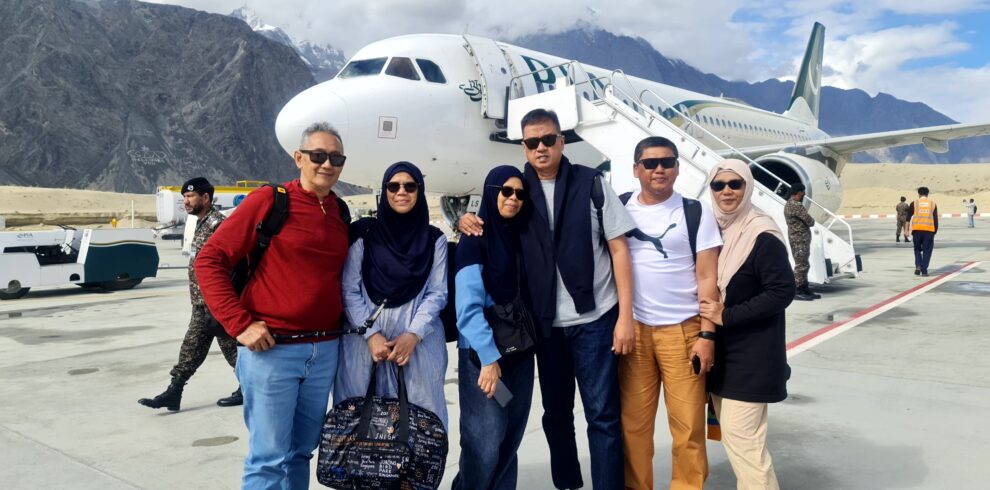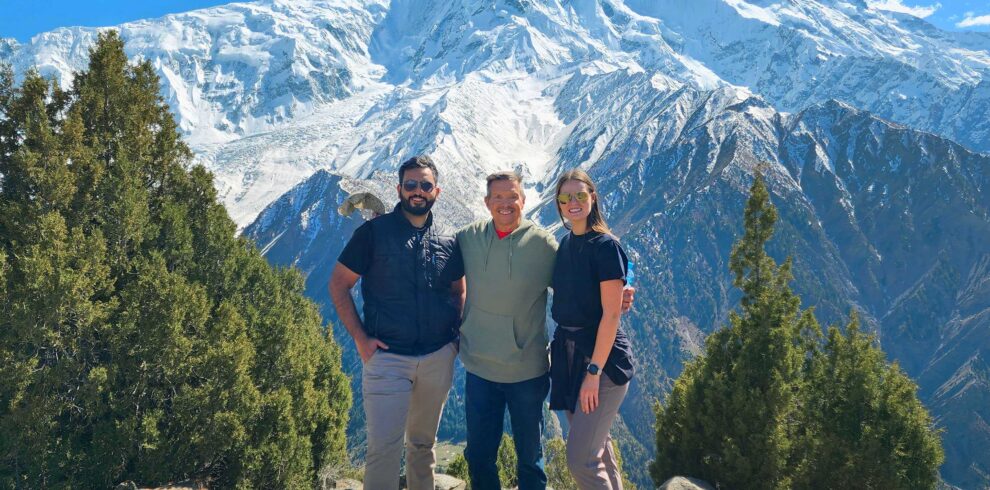At an elevation of 2,559 meters, Attabad Lake, also known as Gojal Lake, sits in Hunza Valley, Gilgit-Baltistan, Pakistan. It was created by a natural disaster in January 2010. Since then, its deep blue waters, framed by Karakoram peaks, have drawn local and international visitors.
Before the Landslide
Before January 4, 2010, Attabad and neighboring villages like Shishkat, Gulmit, Ayeenabad, and Gulkin lay along the Hunza River. The Karakoram Highway passed through the region, serving as a major trade route between Pakistan and China. The slopes here had been weakened over years by erosion, snow melt, rain, and a 2002 earthquake in Astore that caused cracks—setting the stage for instability. Read More
The Day It Happened
On 4 January 2010, a massive landslide buried Attabad village and blocked the Hunza River about 14 km east of Karimabad. Twenty people were killed, and dozens of homes were destroyed. The blockage disrupted the river’s flow for months and submerged over 19 km (12 mi) of the vital Karakoram Highway.
Video of Landslide which formed Attabad Lake
Formation of the Lake and its Depth
With the river blocked, water began pooling behind the landslide dam. By early June 2010, the lake had stretched 21 km (13 mi) long and reached a maximum depth of approximately 100–109 m (330–358 ft). Some reports claim depth up to 122 m (400 ft), though the most referenced figures remain around 100 m.
Immediate Impact
The rising waters flooded villages—Ayeenabad, Shishkat, parts of Gulmit and Gulkin—displacing around 6,000 residents and isolating an additional 25,000 who became stranded when roads disappeared. Homes, shops, schools, orchards, even ancient Buddhist and Muslim heritage sites were lost beneath the water. Food, medicine, and supplies became scarce as transport routes, even helicopters, were unable to reach the area.
Emergency responses included aid from Punjab’s government (100 million PKR, plus 0.5 million for families of the deceased) and relief camps for the displaced.
Controlling the Flood
By May 2010, authorities began digging a spillway to let water flow safely over the landslide dam. By August, it was operating properly, preventing catastrophic overflow. Although the immediate threat passed, the lake remained—and continues to be—a permanent change in the landscape.
Map of Gilgit Basin: A broad valley region in Gilgit-Baltistan, Pakistan, where the Gilgit River flows before joining the Indus River
Rebuilding the Highway
With the Karakoram Highway submerged, travelers and locals relied on makeshift boat crossings. Traditional wooden boats, called “dongas,” carried people, cars, goods—even livestock—across the lake. Boatmen relied on this for income, charging roughly $3–5 per crossing.
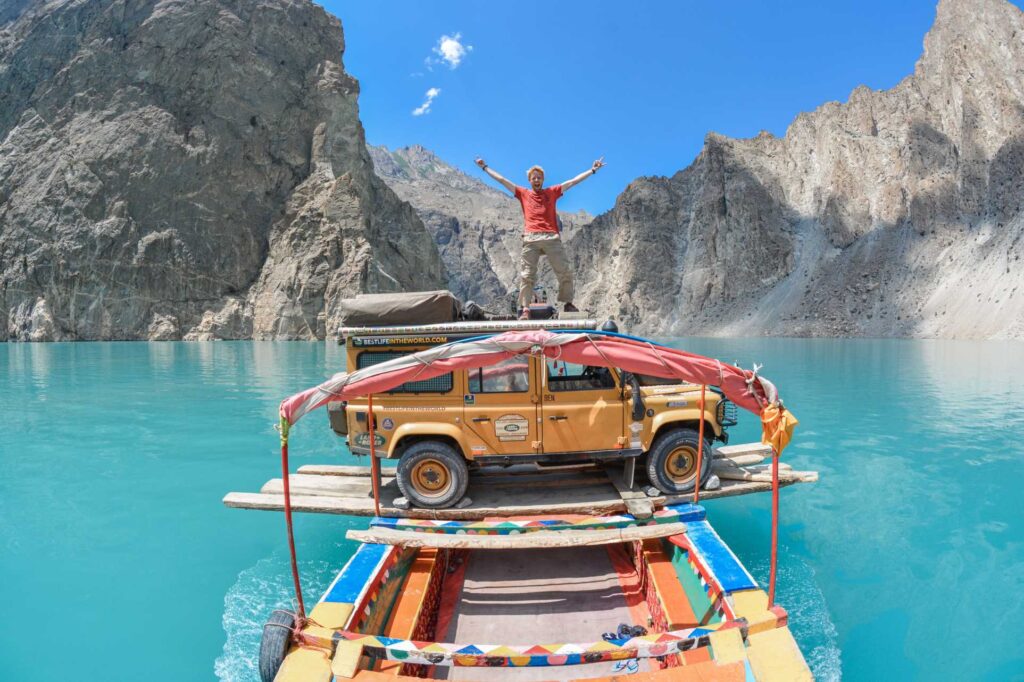
In 2015, a major reconstruction project restored the highway. Chinese engineers built a 24 km bypass including five tunnels (totaling 7 km) and bridges, launching it on September 14, 2015, at a cost of US $275 million.
Attabad Lake Today
Over a decade later, Attabad Lake draws tourists with its clear turquoise waters, dramatic peaks, and a dramatic origin story. It feeds local income through:
- Boating & Jet-Skiing: Scenic rides on wooden boats or jet skis are common in summer.
- Hiking & Camps: A stunning trekk near Attabad lake for 2 hours will take you to scenic Baskochi Meadows with stunning views of Attabad lake from mountain top.
- Winter Activities: In colder months, parts of the lake may freeze—making ice-skating and snowy views possible.
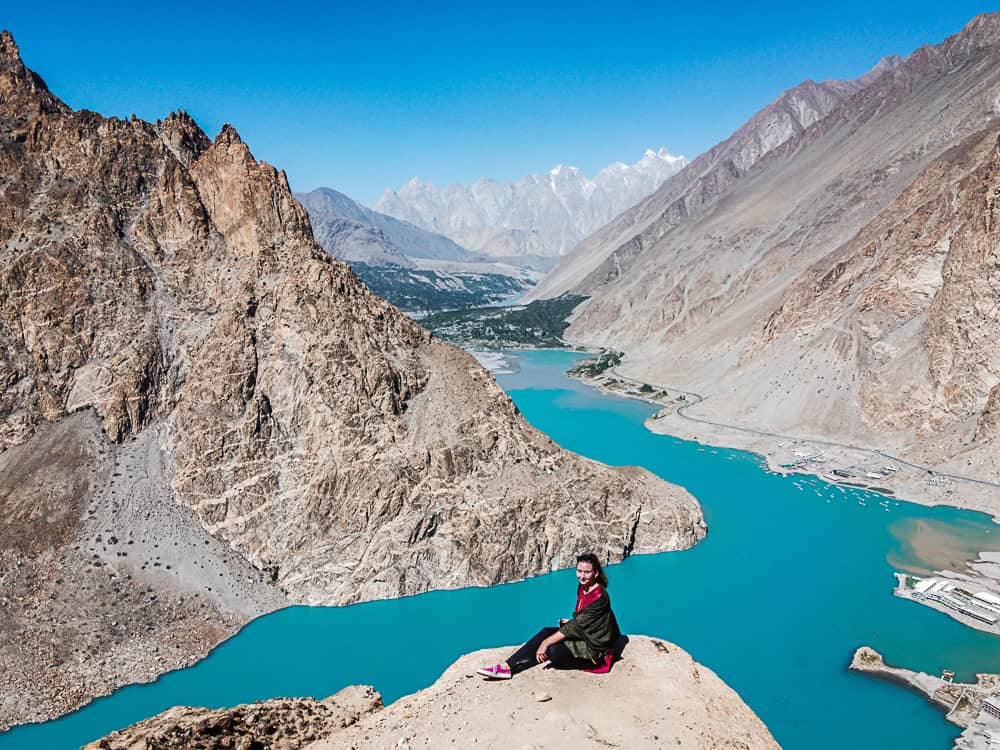
Access to Attabad Lake
Attabad Lake is accessible by road from Hunza Valley. The lake lies about 14 km east of Karimabad in Gilgit-Baltistan. Here’s how visitors can get there:
- Private Tours – Popular among tourists for flexibility and comfortable experience, with drivers familiar with mountain roads.
- By Road from Islamabad – Around 600 km via the Karakoram Highway, passing through Abbottabad, Besham, Chilas, Gilgit, and Karimabad or via Babusar Top road which is accessible from Mid-June to October (travel time: 15–18 hours by road).
- From Gilgit City – Tourists can take direct flight to Gilgit from Islamabad and then have a by road journey towards Attabad Lake. Approximately 2.5 to 3 hours drive (125 km) on the Karakoram Highway.
- Public Transport – Regular buses and vans operate from Gilgit to Hunza, and can also find a local van from Aliabad, Hunza which can drop you near the lake.
Local Culture & Tourism Impact
Tourism revived the economy. Hotels and guesthouses, shops selling dried fruit and crafts, boat services, and guide jobs expanded in the area. Local foods like Chapshuro, walnut cake, apricot soup, and fresh trout are now highlights of the visitor experience.
Tour operators also offer cultural stays—visitors can experience hospitality, local music, and traditions of Burusho and Wakhi people.
Environmental Concerns
Growing tourism brings challenges:
- Waste and Pollution: Increased litter and boat traffic threaten the lake’s clarity.
- Deforestation and Waste Management: New infrastructure puts pressure on forests; proper waste disposal remains a challenge.
Local groups are encouraging eco-tourism, reforestation and awareness efforts to protect the lake.
Quick Reference Table
| Aspect | Details |
|---|---|
| Formation Date | January 4, 2010 |
| Cause | Landslide blocked Hunza River |
| Elevation | 2,559 meters (8,396 feet) |
| Max Length | ~21 km (13 mi) |
| Max Depth | ~100–109 m (330–358 ft); some sources 122 m (400 ft) |
| Villages Affected | Attabad, Ayeenabad, Shishkat, Gulmit, Gulkin |
| People Displaced | ~6,000; ~25,000 stranded |
| Highway Impact | ~19 km of Karakoram Highway submerged |
| Spillway Built | May–August 2010 |
| Tunnels Built | Completed September 2015: 5 tunnels, 7 km and bridges, cost US$275 million |
| Activities | Boating, jet-skiing, hiking, camping, ice-skating |
| Tourism Benefits | Local jobs, hotels, cultural representation, boost in Hunza tourism |
| Environmental Risks | Pollution, deforestation, excessive real estate construction |
Hotels on Attabad Lake
There are quite a few options now at Attabad lake. Here you can check some of the potential options, also contact us to plan your Ultimate Pakistan Tour with such scenic stays!
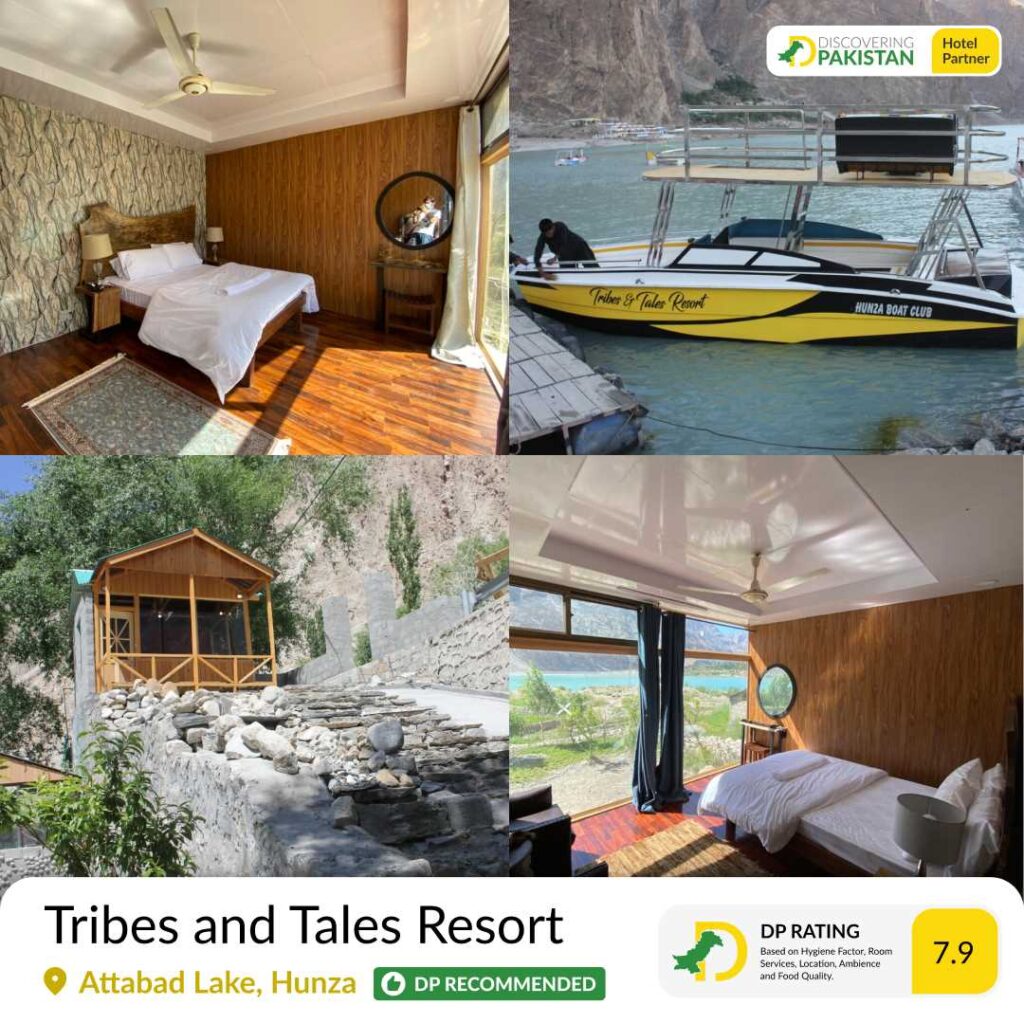
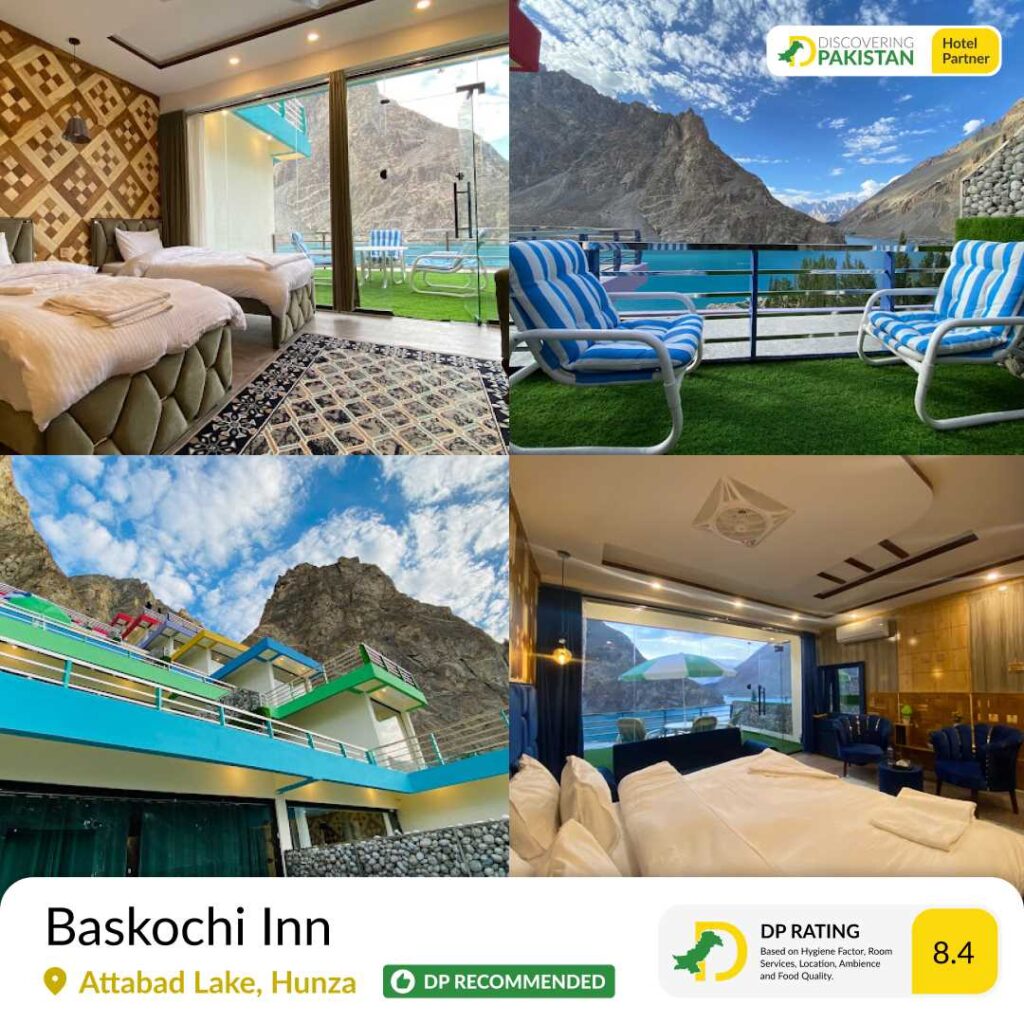

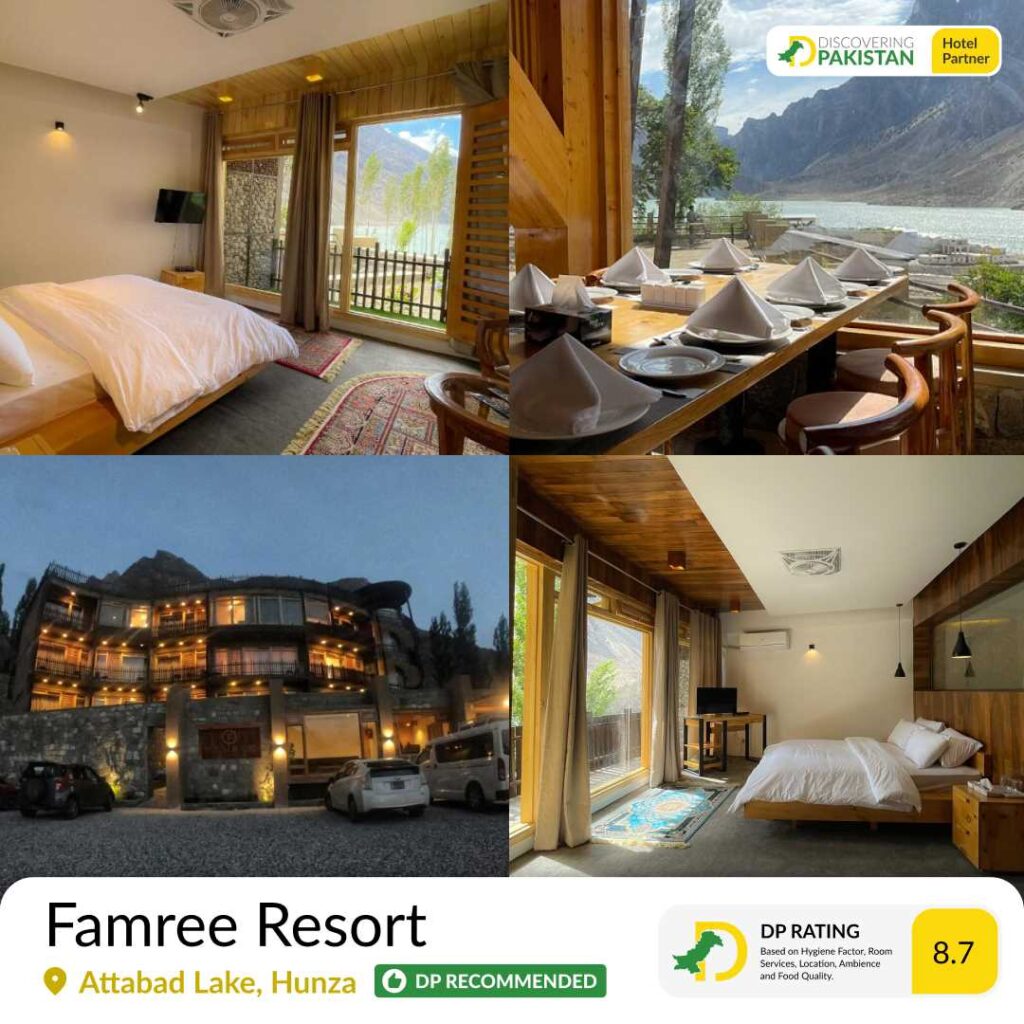
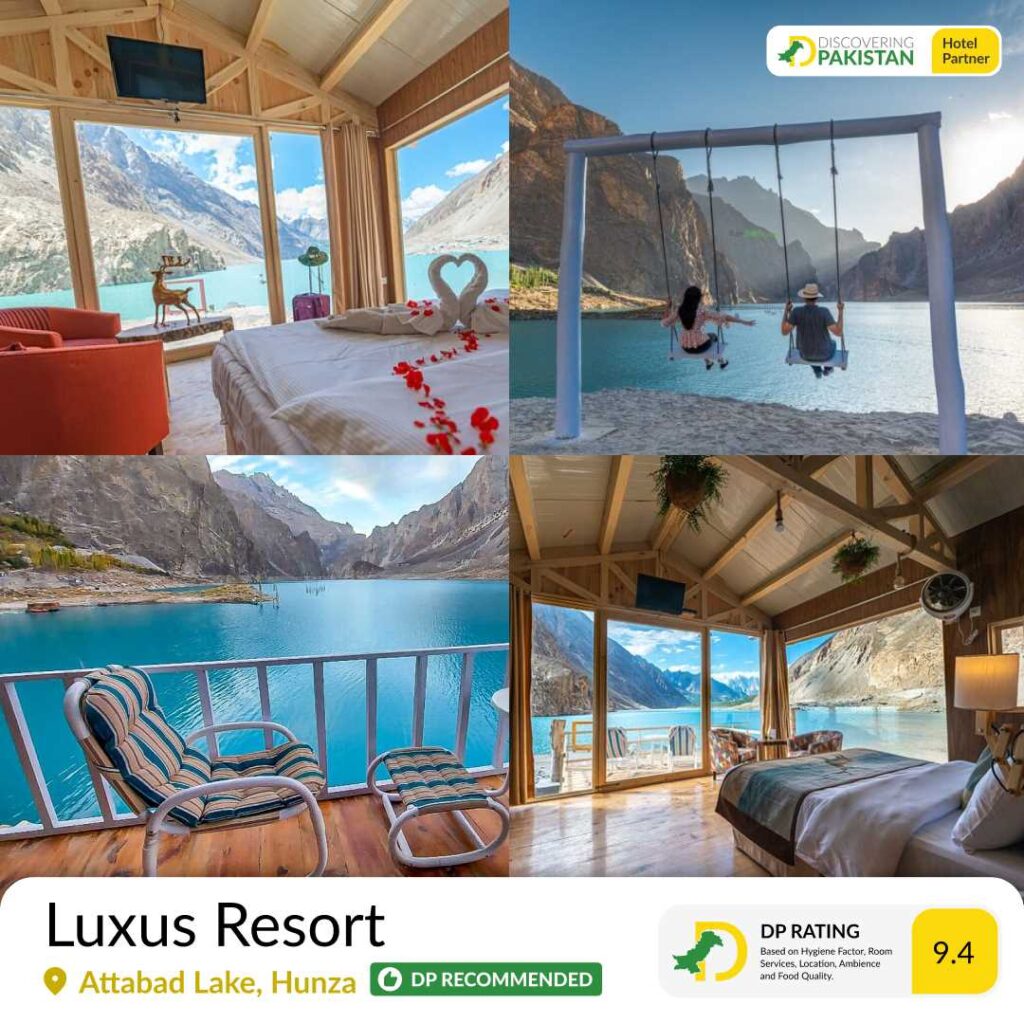
Why It Matters
Attabad Lake is a powerful example of how a sudden tragedy reshapes landscapes and lives. From drowning villages and stranded populations to revived tourism and rebuilt infrastructure, it shows resilience and transformation. Today it stands as both a memorial and a destination—drawing visitors, supporting communities, and reminding us how nature and human response can intertwine.
Private Tours including Attabad Lake
This tour begins in Islamabad, Travel Hunza by road via KKH. You spend several days exploring Hunza Valley and Skardu. Also witness the historically prominent city of Peshawar in this tour.
This tour begins in Islamabad, Travel Hunza by road via KKH. You spend several days exploring Hunza Valley’s landscapes and heritage. Continue the journey back to Islamabad via KKH or Naran-Babusar scenic route.
Starting in Islamabad, this 10-day tour includes a flight to Skardu, then a road journey to Hunza, exploring both regions in detail. After flying back to Islamabad, the trip concludes with sightseeing in Lahore. The tour ends in Lahore.
This tour begins in Islamabad, flying to Gilgit to reach Hunza by road. You spend several days exploring Hunza Valley’s landscapes and heritage. After returning to Islamabad by air, the tour ends with 1–2 days in Lahore. The trip finishes in Lahore.
This 14-day tour starts in Islamabad with a flight to Skardu. You explore Skardu, then travel to Hunza and Fairy Meadows. After returning to Islamabad by air, you visit Khewra Salt Mines on the way to Lahore, where the tour ends.
